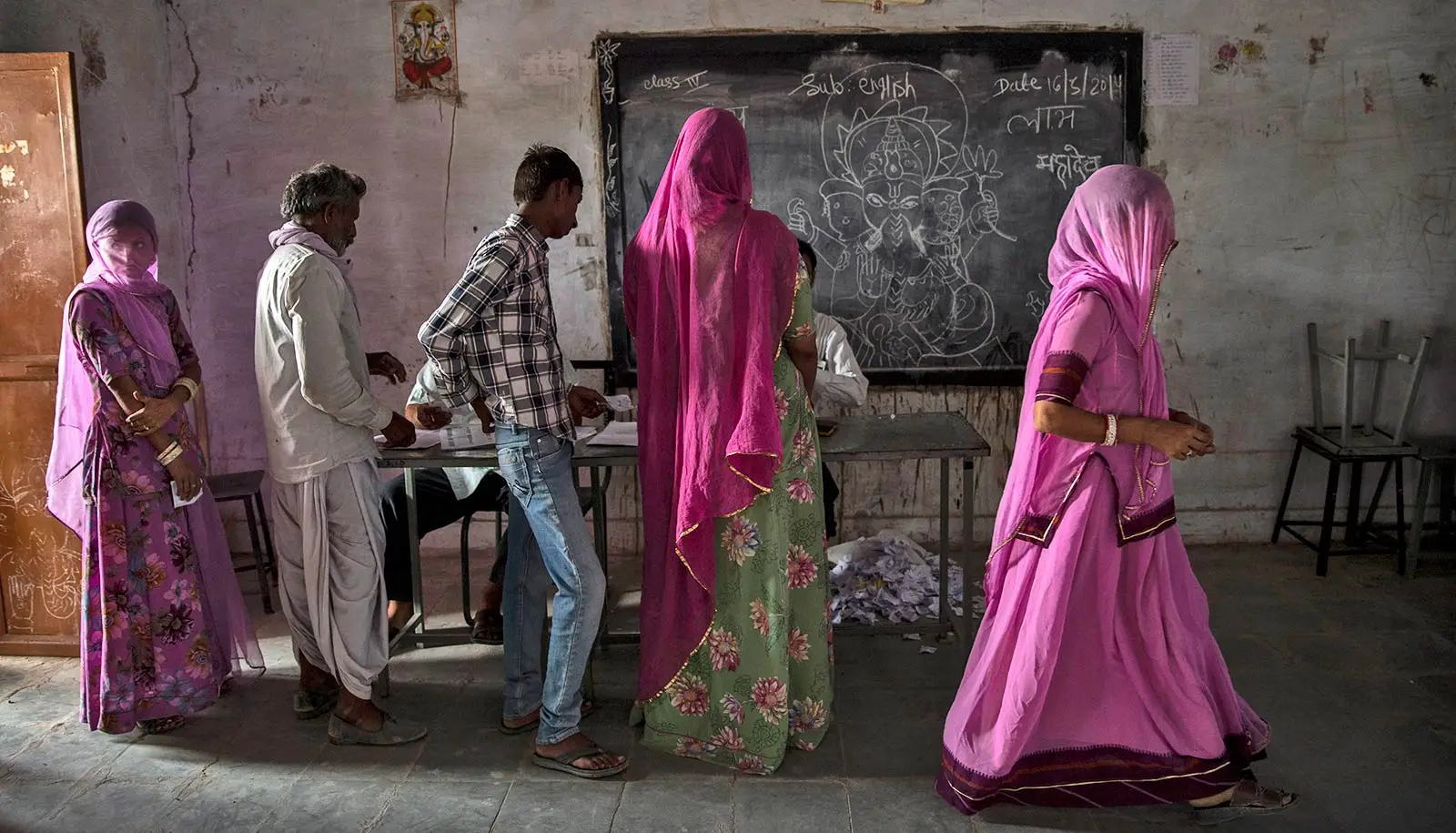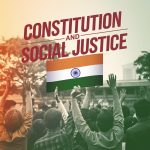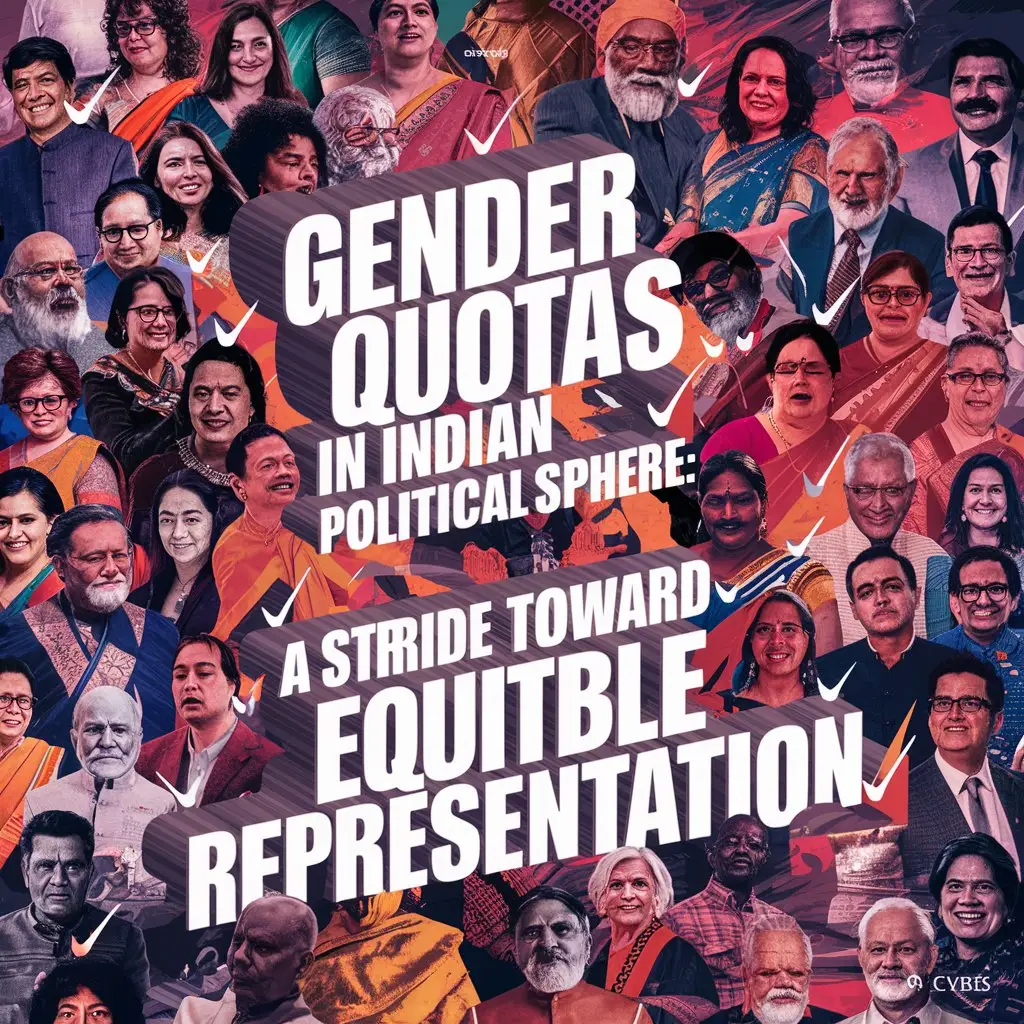Gender Quotas in Indian Political Sphere: A Stride Toward Equitable Representation
Within the mosaic of India’s political landscape, the quest for gender parity stands as a protracted battle. While strides have been taken in various realms, political representation has often trailed behind. Nevertheless, the introduction of women’s quotas in Indian politics has manifested as an imperative stride towards achieving gender egalitarianism within the nation’s governance structure.
The discourse surrounding the issue of women’s quota in politics has evolved into a subject of extensive deliberation and dialogue in India, emblematic of the ongoing crusade for gender equity and all-encompassing governance. This transformative notion aspires to afford women enhanced opportunities and representation in the nation’s political domain, acknowledging the pivotal role they perform in shaping policies and decisions resonating across society.
India, renowned for its opulent cultural multiplicity and democratic traditions, embarked on a notable journey toward women’s political empowerment by instituting reservations in local governance via the Panchayati Raj system during the 1990s. This pioneering maneuver earmarked one-third of seats for women in local village councils and urban local bodies, galvanizing women to take active roles in grassroots politics and thereby challenging entrenched gender norms.
Presently, the endeavor appears to culminate with the allocation of 33% reservation for women in both parliament and the Legislative Assemblies. The women’s reservation bill stuck for 27 years, was said to have been cleared by the Narender Modi Government, reserving 33 per cent seats for women. They added that the it is unlikely to be implemented in the 2024 Lok Sabha elections but most probably it could be rolled out in 2029 elections.

Historical Vantage Point:
The origins of this policy trace back to the 1990s when the Constitution underwent an amendment, mandating the reservation of one-third of seats for women in local village councils under the Panchayati Raj framework. This historic stride imbued countless women with the agency to actively engage in grassroots politics, thus defying established gender paradigms and cultivating women’s leadership. The historical narrative of women’s reservation in Indian politics unfolds as an evolutionary chronicle punctuated by pivotal milestones:
During the struggle for independence, luminaries like Sarojini Naidu, Annie Besant, and Kamala Nehru participated ardently in political movements. Nonetheless, their engagement often assumed supporting roles or represented prominent voices within social reform movements.
Post-Independence, India’s 1950 constitution bestowed equal rights and opportunities upon both genders. However, women’s involvement in politics remained relatively subdued in the nascent years of the republic.
The 1970s witnessed the ascent of the women’s movement in India, championing amplified gender parity across all facets of life, politics included. The “Report on the Status of Women in India” (1975) underscored the necessity for greater female representation in decision-making echelons.
A watershed moment transpired in the 1990s when the Indian Constitution underwent the 73rd and 74th Amendments, mandating the reservation of one-third of seats for women in local village councils (Panchayati Raj) and urban local bodies. This initiative ushered women into the political arena at the grassroots level, signifying a momentous stride towards women’s political empowerment.
Another pivotal juncture surfaced with the proposal of the Women’s Reservation Bill in the Indian Parliament in 1996. The bill aspired to allocate one-third of seats in the Lok Sabha (the lower house of India’s parliament) and state legislative assemblies for women. While the bill encountered substantial debates and delays, it persists as a symbol of the unceasing struggle for gender equality in Indian politics.
Several Indian states have taken the lead in implementing women’s reservation in local governance bodies and state legislatures. For instance, Bihar and West Bengal have instituted women’s reservation policies, leading to augmented female participation in state and local decision-making.
Over time, political parties have discerned the significance of women as both voters and candidates. Many parties have instituted internal quotas for female candidates and pledged to augment female representation within their ranks.
The historical panorama of women’s reservation in Indian politics mirrors a gradual shift towards recognizing women’s pivotal role in governance and decision-making. Despite grappling with challenges and debates, these initiatives have contributed to augmenting the visibility and involvement of women in India’s political tableau, paving the avenue for a more encompassing democracy.
The historical panorama of women’s reservation in Indian politics mirrors a gradual shift towards recognizing women’s pivotal role in governance and decision-making. Despite grappling with challenges and debates, these initiatives have contributed to augmenting the visibility and involvement of women in India’s political tableau, paving the avenue for a more encompassing democracy.
Advocating for Women’s Quotas:
The implementation of women’s quotas in national and state legislatures has engendered impassioned discourse. Advocates posit that this constitutes an indispensable remedial measure to rectify the historical gender bias pervading the political sphere. Women form nearly half of India’s populace, and their underrepresentation in decision-making forums epitomizes a glaring incongruity necessitating redress.
Amplifying Women’s Articulations: Women’s quotas offer a forum for women to vocalize their apprehensions and viewpoints on policies intrinsically entwined with their lives. It ensures that their voices resonate in matters encompassing healthcare, education, employment, and social welfare.
Eradicating Stereotypes: By augmenting the female presence in politics, this policy contests the entrenched stereotypes that have impeded women from assuming leadership roles. It conveys a potent message that women are equally adept at occupying public office and shaping pivotal decisions.
Policy Impact: Research indicates that women in politics often prioritize issues such as education, healthcare, and social welfare, which have direct repercussions on the welfare of families and communities. This can catalyze more equitable and comprehensive policy formulation.
Challenges and Apprehensions:
While the notion of women’s reservations in politics commands commendation, it is not bereft of impediments:Opposition persists, with some quarters contending that reservations exemplify tokenism, arguing that political leaders should be elected solely based on merit.The implementation of reservation policies confronts challenges in ensuring that women elected under these quotas wield the authority to contribute substantively and are not reduced to proxies for male relatives.Intersectionality warrants consideration, ensuring that the policy benefits women from marginalized backgrounds, including those from lower castes, tribes, and minority communities.
The Path Forward:
Women’s reservations in Indian politics epitomize a significant stride towards gender parity. To guarantee its efficacy, it is incumbent to address concerns and challenges while concurrently celebrating the progress achieved. This presents a call to action for India to embrace the kaleidoscope of its populace and empower women to actively partake in shaping the nation’s destiny.In summation, women’s reservations in Indian politics epitomize not just a step towards parity but a monumental leap toward a more inclusive and representative democracy. It is high time to acknowledge that empowering women in politics is not solely a matter of justice but also a pivotal catalyst for positive societal transformation. In the words of former Indian Prime Minister Indira Gandhi, “Women’s empowerment and their participation in the political arena are pivotal for the growth and development of our nation.” This sentiment remains as pertinent today as it did in her era.







